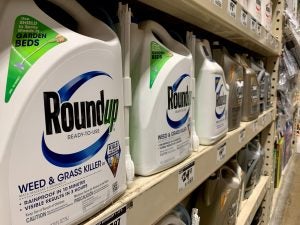Glyphosate has continued to be a product that spurs intense debate in both the scientific community and the general public.
As the most widely used herbicide in the United States, glyphosate is applied to 87 percent of corn, soybean, and cotton acres. It’s an effective, targeted, cost-efficient weed control tool that enables farmers to add conservation practices such as no-till and cover crops that reduce fuel use and emissions.
But, what would farming look like without this cornerstone herbicide?
A new report titled, A Future Without Glyphosate and released by Aimpoint Research and funded by Bayer, explores the complexities of glyphosate’s impact on our agricultural system, farmers’ livelihoods, the economy, and the environment, and the near-term consequences of removing glyphosate from ag systems.
Ultimately, the report determines that if glyphosate were no longer available, U.S. farmers would bear the burden of increased input and operating costs, with small farmers disproportionately affected.
The continued analysis also reveals a “cascading chain” of likely high-order effects and consequences, including the release of additional greenhouse gasses and the reversal of conservation and sustainability gains.
“Ongoing public debate about glyphosate has led some to question what the impacts would be if it were no longer available, and Aimpoint Research is uniquely suited to develop that future scenario,” said Colonel Mark Purdy, Aimpoint Research Chief Operations Officer. “We leveraged multiple research methods, including open-source research, economic modeling, subject-matter expert interviews, and military-style wargaming techniques to understand the impact of glyphosate on our agricultural system.”

Main impacts of A Future Without Glyphosate:
- U.S. agriculture would see increased tillage and decreased cover crops, potentially releasing up to 34 million tons of carbon dioxide — the equivalent of 6.8 million cars or nearly 36.5 million acres of forests.
- Farmers would see a 2-2.5x increase in input costs due to limited supply and higher prices of alternative products. The increase would disproportionately impact smaller farms.
- Increasing tillage would raise production costs by over $1.9 billion.
- Increased production costs would add inflationary pressure on food prices over the long term for consumers.
- U.S. agriculture — and U.S. corn in particular — would become less competitive globally.
- More alternatives would eventually be available over time. Still, they would take several years and significant investment — an investment that would likely be slowed by regulatory uncertainty and a vacuum in crop protection innovation.
»Related: $16K chemical theft might not pay, but reporting the culprits will


